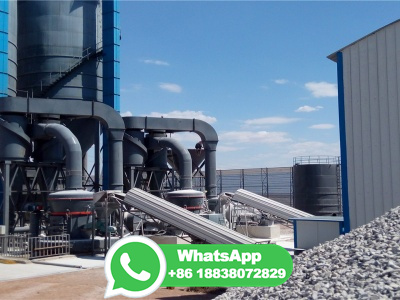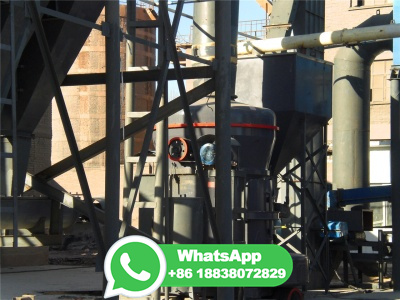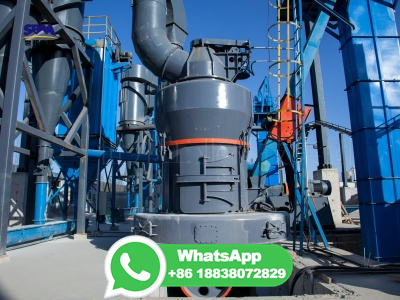
Coal is an abundant natural resource that can be used as a source of energy, as a chemical source from which numerous synthetic compounds (, dyes, oils, waxes, pharmaceuticals, and pesticides) can be derived, and in the production of coke for metallurgical processes. Coal is a major source of energy in the production of electrical power ...
WhatsApp: +86 18203695377
Carbonization is a pyrolytic reaction, therefore, is considered a complex process in which many reactions take place concurrently such as dehydrogenation, condensation, hydrogen transfer and isomerization . Carbonization differs from coalification in that it occurs much faster, due to its reaction rate being faster by many orders of magnitude.
WhatsApp: +86 18203695377
Carbonization Process. In the carbonization process, coal, as a result of the thermal effect in an inert atmosphere and slow heating rate, undergoes structural modifications that produce a raw gas (known as COG, which amounts to around 25wt% of the coal charged) and a molecular rearrangement of the carbon cluster, the result of which is a highly carbonaceous and graphitizable coke.
WhatsApp: +86 18203695377
12. PEAT • Peat is also known as turf. • First stage of transformation. • Contains less than 40 to 50 % Carbon. • Contains sufficient volatile matter and lot of moisture. 13. LIGNITE • Lower grade coal. • Moisture content is High. • 40 to 55 % carbon content. • Contains brown to black woody substances.
WhatsApp: +86 18203695377
Carbonization is the process by which coal is heated and volatile products gaseous liquid are driven off, leaving a solid residue called char or coke High temperature carbonization, > 1650oF (900oC) Main purpose is the production of metallurgical coke for use in blast furnaces foundries Low temperature carbonization, < 1350oF (730oC)
WhatsApp: +86 18203695377
Coal is a black or brownishblack sedimentary rock that can be burned for fuel and used to generate is composed mostly of carbon and hydrocarbons, which contain energy that can be released through combustion (burning). Coal is the largest source of energy for generating electricity in the world, and the most abundant fossil fuel in the United States.
WhatsApp: +86 18203695377
Carbonisation Download as a PDF or view online for free. 6. The object of the carbonization process is the removal of vegetable matter from wool. Processing Stages Scouring of the raw wool with nonionic detergent. Rinsing. Immersion in a long bowl containing 57% (w/v) sulphuric acid, 12 g/L detergent at 20 30C.
WhatsApp: +86 18203695377
The carbon structure of coal tar, coal tar pitch, and the α fraction at treatment temperatures up to 1200°C is investigated by Xray phase and Xray structural analysis. The following Xray structural parameters are determined: the longitudinal La and transverse Lc dimensions of the stacks of molecular layers (lamellas); the distance d002 between the lamellas; and the number N of lamellas in ...
WhatsApp: +86 18203695377
base diameter = metres, capacity = tons of coal. Heat for carbonisation is supplied by burning of volatile matter of coal and. partly by coal itself. Evolved gases burn with the air sucked through an. opening at the top of the closed door. Carbonisation proceeds from top to. the bottom of coal charge.
WhatsApp: +86 18203695377
Coal liquefaction is a process of converting coal into liquid hydrocarbons: liquid fuels and process is often known as "Coal to X" or "Carbon to X", where X can be many different hydrocarbonbased products. However, the most common process chain is "Coal to Liquid Fuels" (CTL).
WhatsApp: +86 18203695377
This chapter presents an assessment of the technologies that have evolved for the gasification of coal with a description of the current state of the art of the various technologies. Various types of coal are available such as lignite, subbituminous coal, bituminous coal, and anthracite. The gasification process involves two distinct stages ...
WhatsApp: +86 18203695377
Coal carbonization is the process for producing metallurgical coke for use in ironmaking blast furnaces and other metal smelting processes. The process of converting coal into coke is called as carbonization of coal. heat treatment of coal in absence of air so that the coal decomposes thermally .they produced Solid fuelcoke Liquid fuelcoal tar
WhatsApp: +86 18203695377
The oxygen of the air is used up in burning part of the wood charged. The spontaneous breakdown or carbonization of the wood above a temperature of 280°C liberates energy and hence this reaction is said to be exothermic. This process of spontaneous breakdown or carbonization continues until only the carbonised residue called charcoal remains.
WhatsApp: +86 18203695377
Carbonization is a slow pyrolysis process in which biomass is converted into a highly carbonaceous, charcoallike material. Typically, carbonization consists of heating the biomass in an oxygenfree or oxygenlimited environment, and reaction conditions are tailored to maximize the production of char. Traditionally, charcoal production is one of the oldest chemical conversion processes known ...
WhatsApp: +86 18203695377
The production of activated carbon from eucalyptus wood chips by steam activation in a 2000 kg batch intermittent rotary kiln with continuous carbonizationsteam activation process conducted at ...
WhatsApp: +86 18203695377
Formation of Coal (Process) Coal is composed of carbon, hydrogen, oxygen, nitrogen, sulphur, moisture, and incombustible mineral matter (, ash). Fluorinated gases are not formed by coal combustion. Coals are formed from the accumulation of vegetable debris in specialized environments. Obtaining coal from the mines is a difficult job.
WhatsApp: +86 18203695377
What is hydrothermal carbonization? Hydrothermal carbonization (HTC) is a thermochemical conversion process that uses heat to convert wet biomass feedstocks to hydrochar. HTC is performed in a reactor at temperatures ranging from 356 to 482°F,, 180 to 250°C, under autogenous (automatically generated) pressure, with feedstock residence time ranging from to 8 hours [1,2]. The major ...
WhatsApp: +86 18203695377
18. CLASSIFICATION It classifies coal to 4 broad classes based on fixed carbon and calorific value (BTU) on dry mineral matter free basis. Applicable only to vitrinite rich coal and excludes southern Gondwanaland coal Gross Heating Value found on a moist and mineral matter free basis.
WhatsApp: +86 18203695377
Carbonization Free download as Powerpoint Presentation (.ppt / .pptx), PDF File (.pdf), Text File (.txt) or view presentation slides online. its a good lecture on combustion related to all basic parameters ... Carbonization Carbonization is the process by which coal is heated and volatile productsgaseous and liquidare driven off, leaving a ...
WhatsApp: +86 18203695377
To provide an inv estigative presentation into the characteristics and production of coal gas. ... Coal carbonization retorts and systems and coal carbonization process. Patent No. WA1.
WhatsApp: +86 18203695377
Gasification • Thermochemical process of converting solid biomass into syngas or producer gas (N2 differentiates) Reacting biomass with gasifying agents (air, oxygen, steam, etc.) at temperatures >700 °C • 2nd generation route for biomass and waste utilization Developed in 1800s to produce town gas for lighting and cooking ...
WhatsApp: +86 18203695377
To obtain a better understanding of the development of coking pressure during the carbonization process, the plastic and semicoke layers of nine coking coals were investigated. The permeability of the plastic layer to the passage of gas and the porosity of the semicoke were analyzed at two temperatures, 500 and 800 °C. In the case of dangerous coals, there was a wide zone of low permeability ...
WhatsApp: +86 18203695377
Carbonization The process of strong heating of coal in the absence of air converting it into coke is known as carbonization of coal. Coke Lustrous, dense, porous and coherent mass obtained by strong heating of coal in the absence of air is called coke. Types of carbonization a) Lowtemperature carbonization heating coal at 500 7000C.
WhatsApp: +86 18203695377
3. Introduction • Coal is very important naturally occurring and cheaper solid fuel. • Coal varies widely in composition and properties and they are used in different conditions. • Coal characteristics are determined by various kinds of analytical and testing data, which are of scientific,technical and commercial interest. 5. Ultimate ...
WhatsApp: +86 18203695377
Coal carbonization is the process by which coal is heated and volatile products (liquid and gaseous) are driven off, leaving a solid residue called coke. Carbonization of coal involves heating coal to high temperatures either in the absence of oxygen (O2) or in control quantity of O2. A gaseous byproduct referred to as coke oven gas (COG ...
WhatsApp: +86 18203695377
The coals in the carbonization chamber are carbonized by heat transferred from the combustion chamber.
WhatsApp: +86 18203695377
There are four major types (or "ranks") of coal. Rank refers to steps in a slow, natural process called "coalification," during which buried plant matter changes into an ever denser, drier, more carbonrich, and harder material. The four ranks are: Anthracite: The highest rank of coal. It is a hard, brittle, and black lustrous coal, often referred to as hard coal, containing a high ...
WhatsApp: +86 18203695377